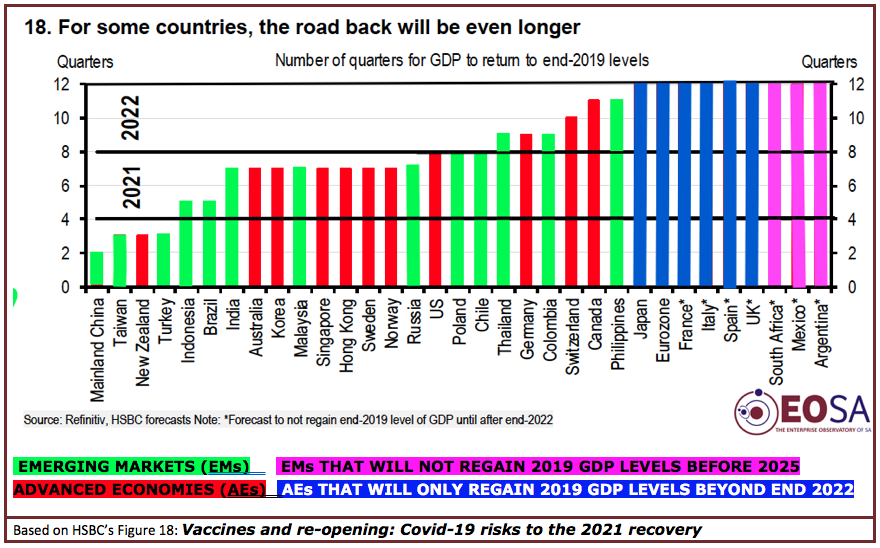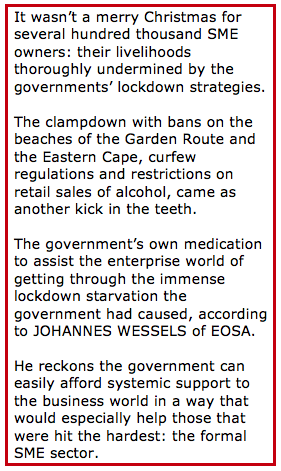Johannes Wessels
As Eskom struggles each day against the odds to keep electricity flowing, readers of on-line publications are treated to a multitude of articles on the SA government’s most effective achievement: the destruction of the country’s economic infrastructure.
A compendium of recent achievements includes:
- Potholes in South Africa increased from 15 million to 25 million in 5 years.
- Johannesburg, the economic powerhouse of the country, experience a water crisis: some suburbs were for up to 3 weeks without water supply and the sound of slowly filling toilet cisterns has become a source of joy and celebration. This despite the Vaal Dam being 90% full and the Sterkfontein Dam that feeds Vaal Dam at full capacity.
- Eskom’s proven unreliability continues with power interruptions due to unplanned maintenance at ageing coal-fired stations, less than capacity generation at the vastly overpriced Medupi and Kusile power stations, as well as insufficient diesel supplies to run the emergency generators.
- Coal exports through the privately developed and owned Richard’s Bay Coal Terminal (RBCT) was in 2021 a mere 58.7 million tons, the lowest since 1996 and far below the design capacity of 91 million tons. The constraints were due to cable theft and the poorly maintained rail tracks of Transnet that resulted in mined coal not reaching the export terminal despite a massive international demand.
- Despite South African ports efficiency far below the global average and constantly declining, the National Port Authority’s latest report indicate it was unable to implement essential capital expenditure projects, spending less than 50% of the R39.8 billion destined for port improvements.
- Several of Durban’s previously famous blue flag beaches have been turned into salty sewerage soiled stretches and untreated sewage still flow into the Vaal Dam at Deneysville.
- Local authorities not maintaining their water distribution networks have lost water to the value of R9.82 billion in a single financial year.
- The collapse of PRASA’s passenger rail services around the country.
Like a Moses pleading with Pharaoh…
The demise of our economic infrastructure has been long in the making. There were numerous technical reports and warnings by professional bodies and experts that under investment in infrastructure and insufficient maintenance would result in too little electricity generating capacity, heavily polluted rivers and major constraints in logistics.
The SA Institute for Civil Engineering (SAICE) warned in 2006 in their Infrastructure Report Card (IRC) that “whilst South Africa’s built environment infrastructure is very good, even world class in places, the relatively poor overall grade reflects extensive maintenance and refurbishment backlogs, caused primarily by funding and skills shortages.” The following SAICE IRCs of 2011 and 2017 conveyed the same message, but the tone got shriller: “the below average grade reflects the continuing low maintenance levels and even neglect in many areas. A lack of commitment to long term planning, adequate dedicated funding, proper management systems, data collection and skill deployment are major contributing factors…”
The government and senior officials, however, turned a deaf ear again. But this can be their Achilles’ Heel.
Continue reading “Decayed economic infrastructure: the Achilles’ Heel of the ANC Government?”




